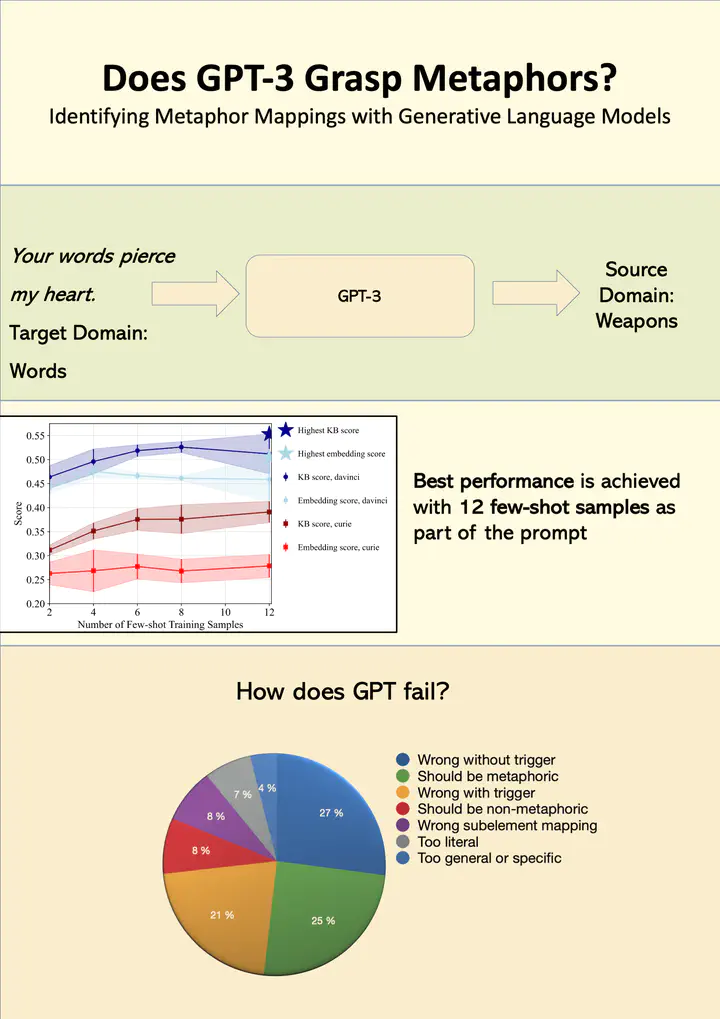Does GPT-3 Grasp Metaphors? Identifying Metaphor Mappings with Generative Language Models
 Overview of ideas and findings in the paper
Overview of ideas and findings in the paper
Abstract
Conceptual metaphors present a powerful cognitive vehicle to transfer knowledge structures from a source to a target domain. Prior neural approaches focus on detecting whether natural language sequences are metaphoric or literal. We believe that to truly probe metaphoric knowledge in pre-trained language models, their capability to detect this transfer should be investigated. To this end, this paper proposes to probe the ability of GPT-3 to detect metaphoric language and predict the metaphor’s source domain without any pre-set domains. We experiment with different training sample configurations for fine-tuning and few-shot prompting on two distinct datasets. When provided 12 few-shot samples in the prompt, GPT-3 generates the correct source domain for a new sample with an accuracy of 65.15% in English and 34.65% in Spanish. GPT’s most common error is a hallucinated source domain for which no indicator is present in the sentence. Other common errors include identifying a sequence as literal even though a metaphor is present and predicting the wrong source domain based on specific words in the sequence that are not metaphorically related to the target domain.